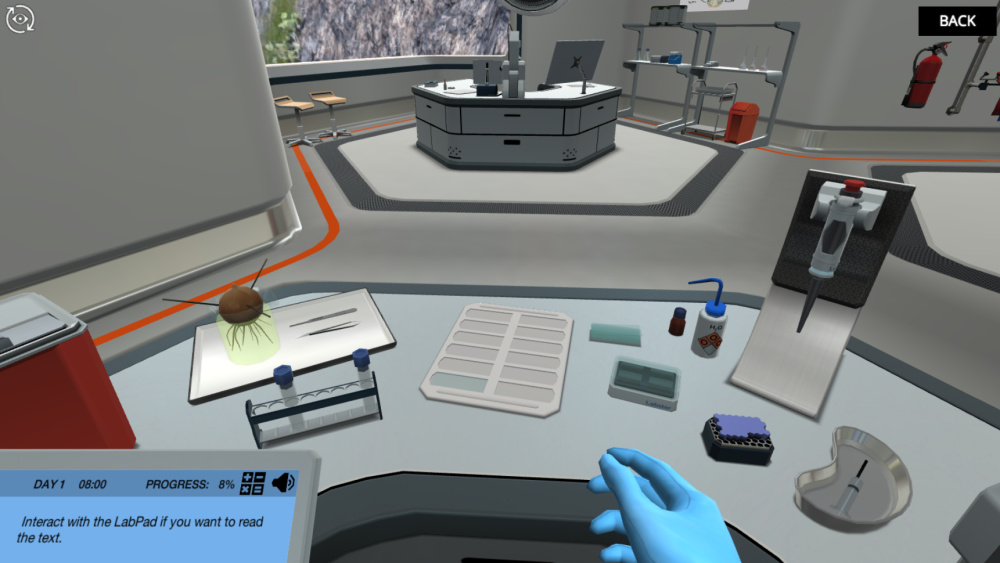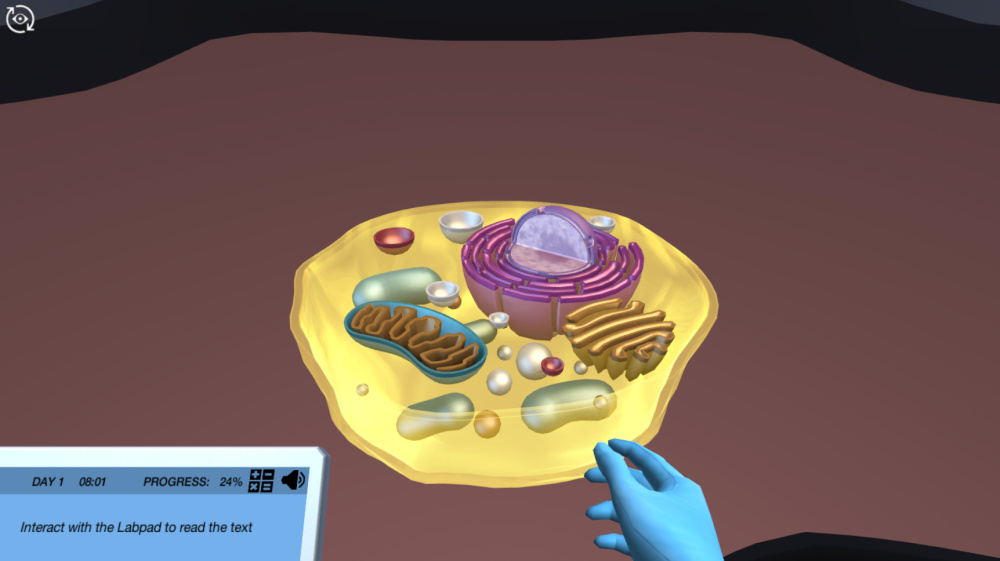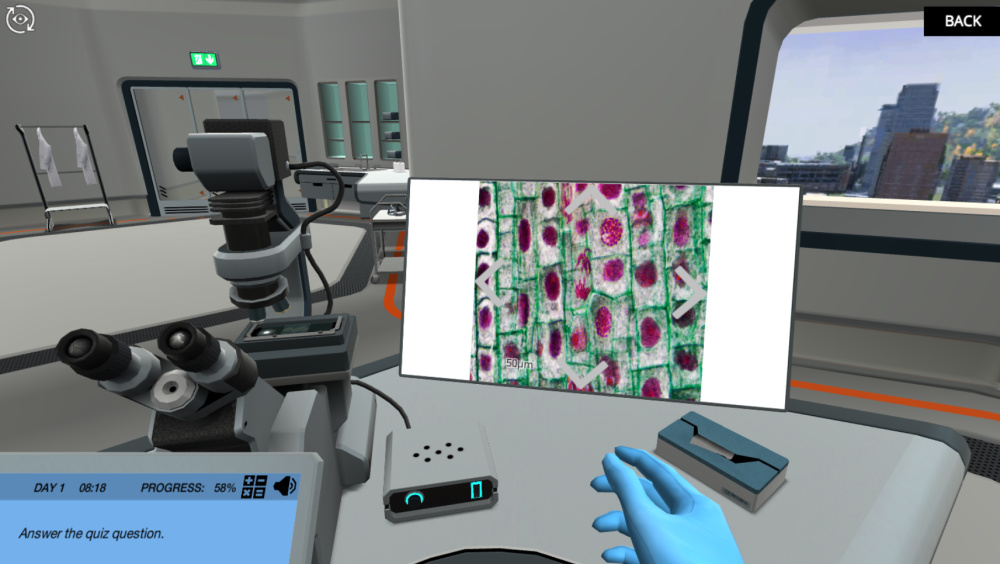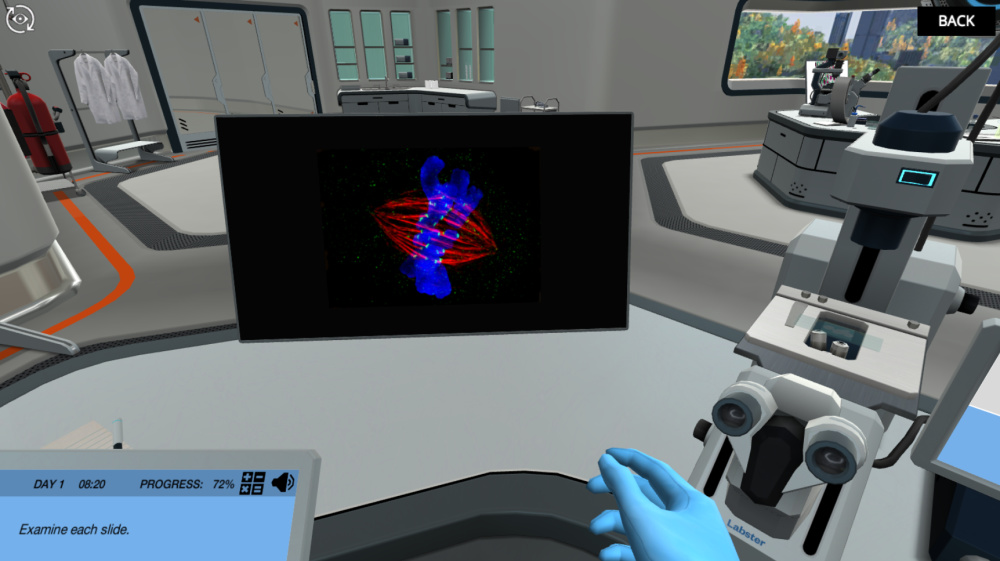Mitosis: Using a toxic compound from the yew tree in cancer therapy Virtual Lab
Join a cell biology research group to find out how a poisonous compound from a yew tree can be used in cancer therapy. You will be immersed in an animation of a human cell and use light and fluorescence microscopy to study cell division.

Try Labster's 30-Day All-Access Trial for Free
Discover one of our 200+ simulations today
- Description
- Features
About the Mitosis: Using a toxic compound from the yew tree in cancer therapy Virtual Lab
How can a toxic compound be used in medicine? Paclitaxel, isolated from yew trees, can kill large animals like horses but is also used in cancer therapy. In this simulation, you will learn how cells divide and how they are affected by poisonous paclitaxel.
How is DNA packaged?
Start by diving into a blood sample to find out how DNA is packaged in an immersive animation of the cell. Find the DNA inside the nucleus and then zoom in from the chromosomes all the way to individual nucleotides.
使用microscopy to study mitosis
Understand the different stages of mitosis through interactive graphics and quiz questions. Then, prepare a sample of onion cells to observe the phases of mitosis and find out how each phase contributes to successful duplication of the cell. By now, you will understand enough about mitosis to replicate the process in a computer model.
测试紫杉醇的作用
Finally, combine all your new skills and knowledge to test the effect of paclitaxel on cultured cells. Will the compound inhibit or accelerate cell division? How will it affect cancer cells or animals who eat the yew tree?
Join a cell biology research group to find out how a poisonous compound from a yew tree can be used in cancer therapy. You will be immersed in an animation of a human cell and use light and fluorescence microscopy to study cell division.
At the end of this simulation, you will be able to...
- Understand and visualize basic concepts about eukaryotic cells such as main cellular components and DNA packaging by immersive animations
- Understand the key characteristics of the cell cycle's different stages: interphase (G1, S and G2) and mitosis
- 使用different microscopy techniques to observe the different phases of the mitosis (Prophase, Metaphase, Anaphase, Telophase) and describe their main characteristics
- Explain the cell cycle checkpoints and name the molecules that control them (cyclins and cyclin-dependent kinases) and their function
- Describe the main differences between mitosis and meiosis
Length: 46 Minutes
Accessibility mode: Available
Languages: English (United States), German, Spanish, French, Italian
HS-LS1-4
1.6 Cell Division
Topic 4.6: Cell Cycle




